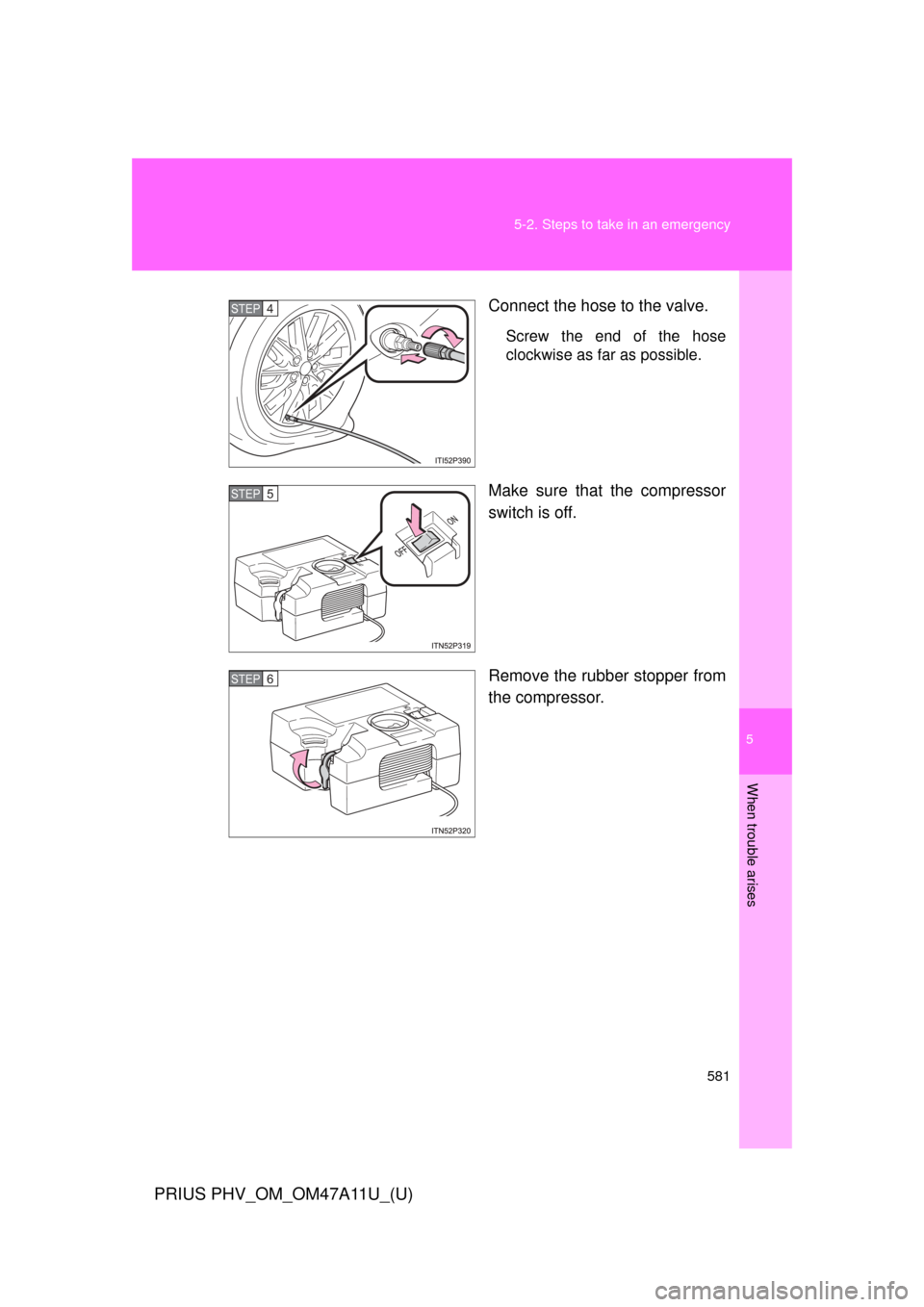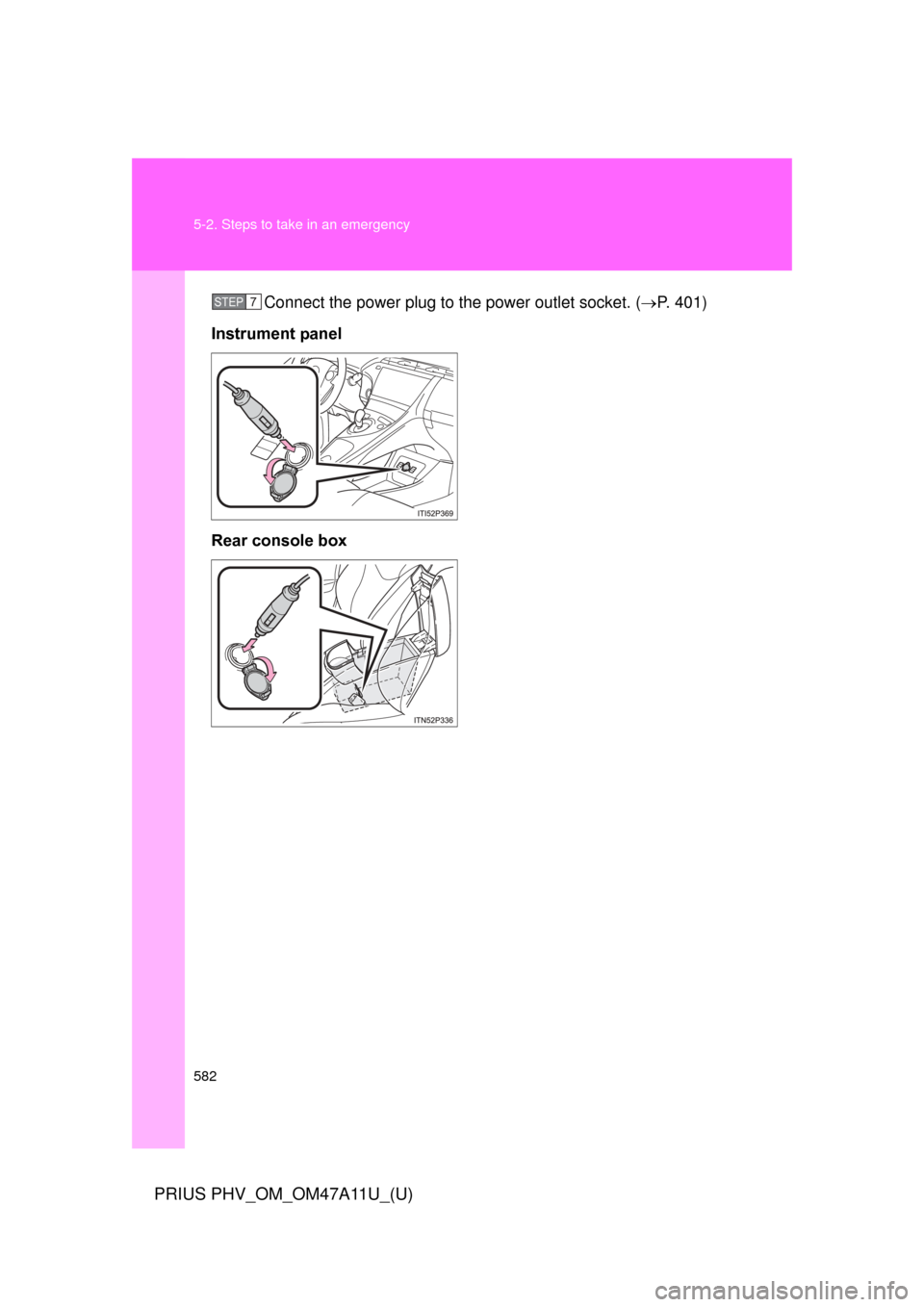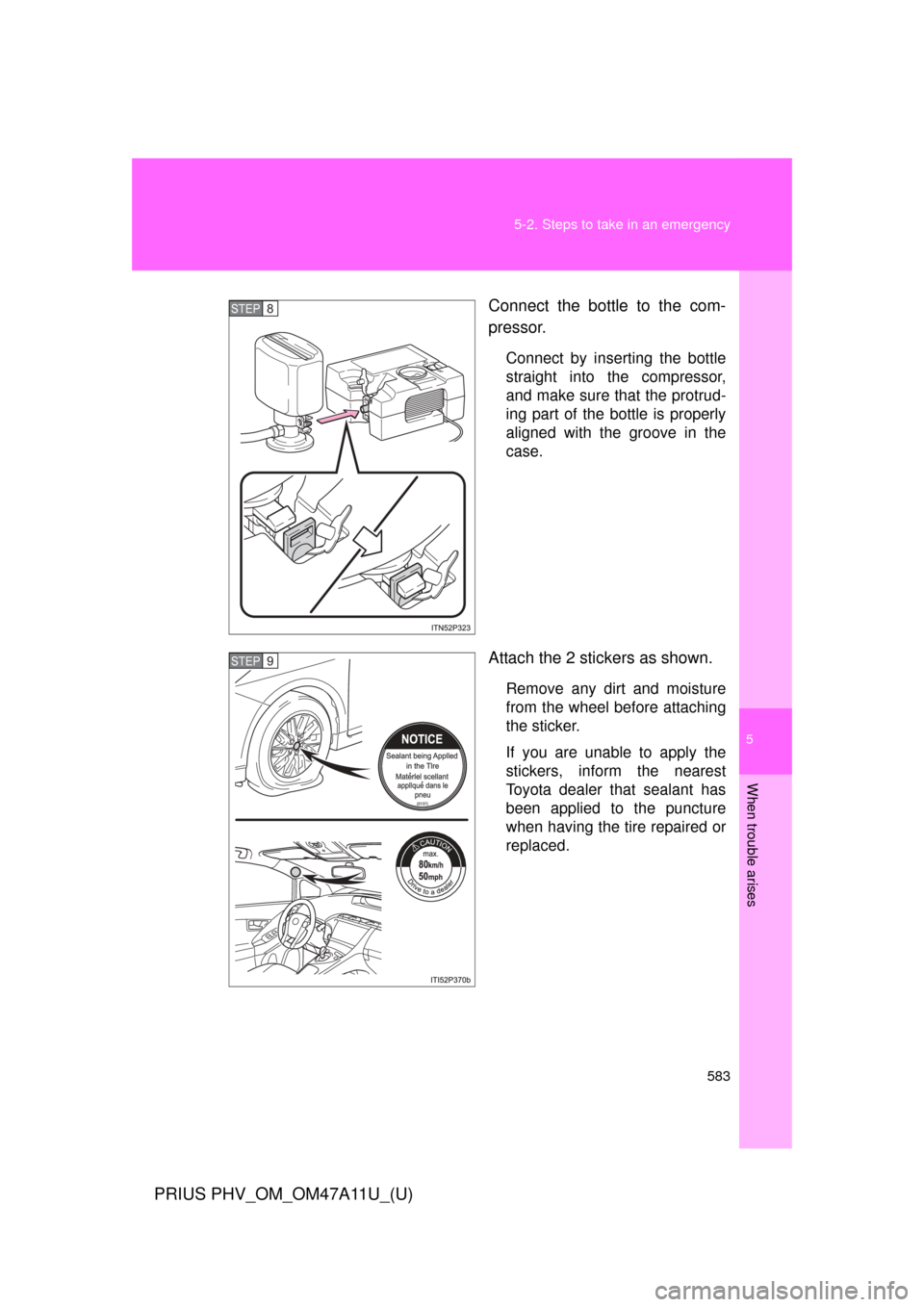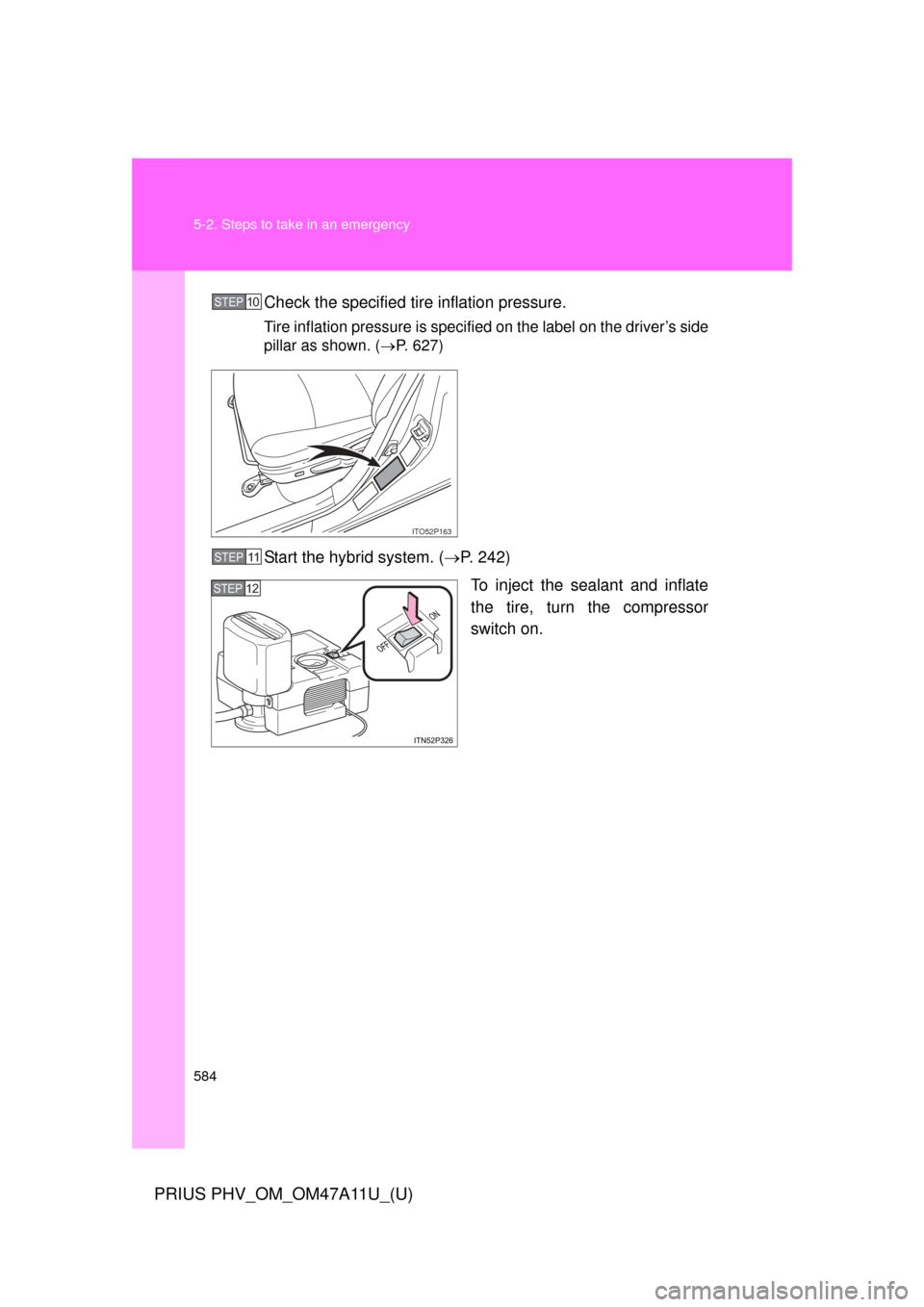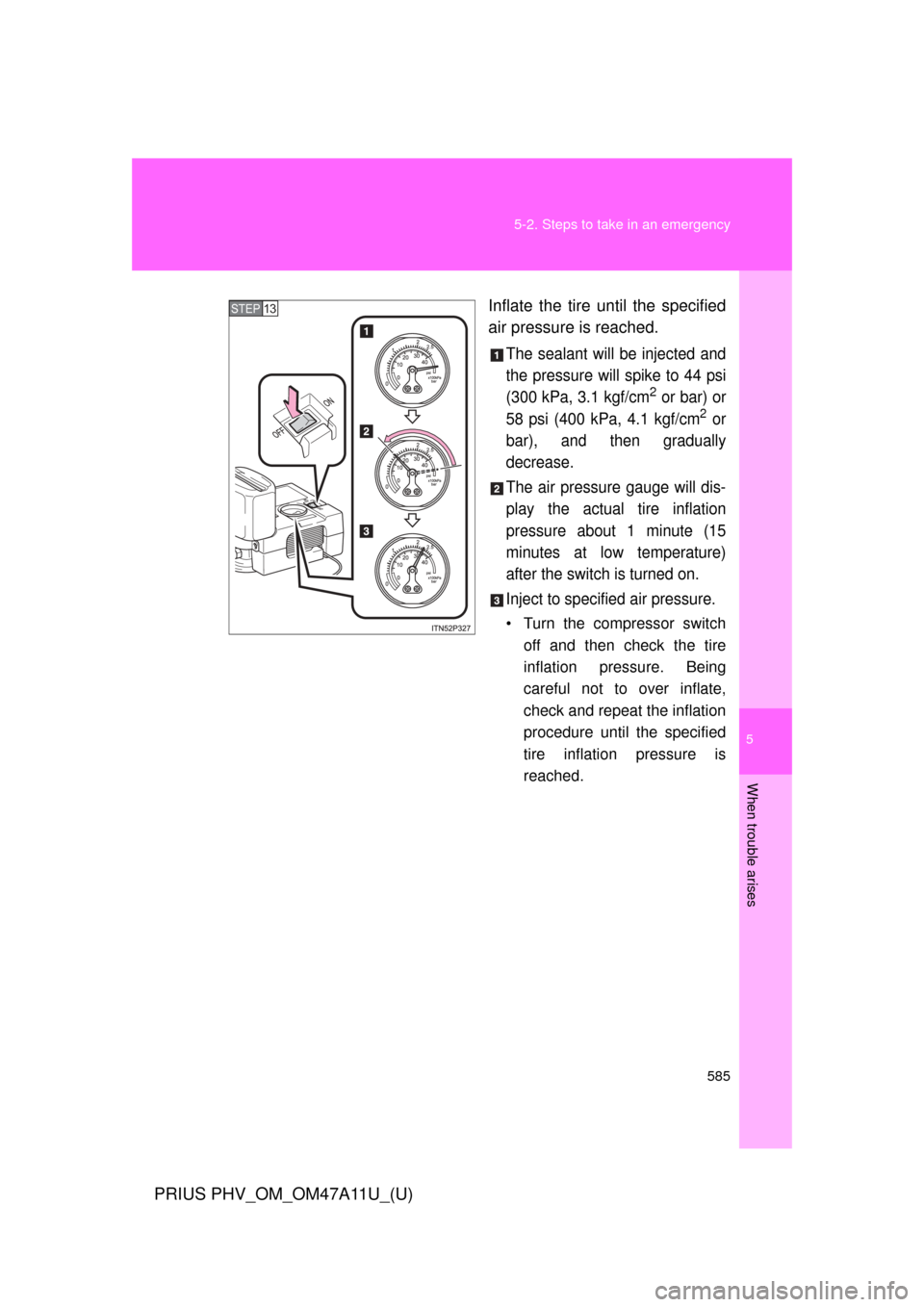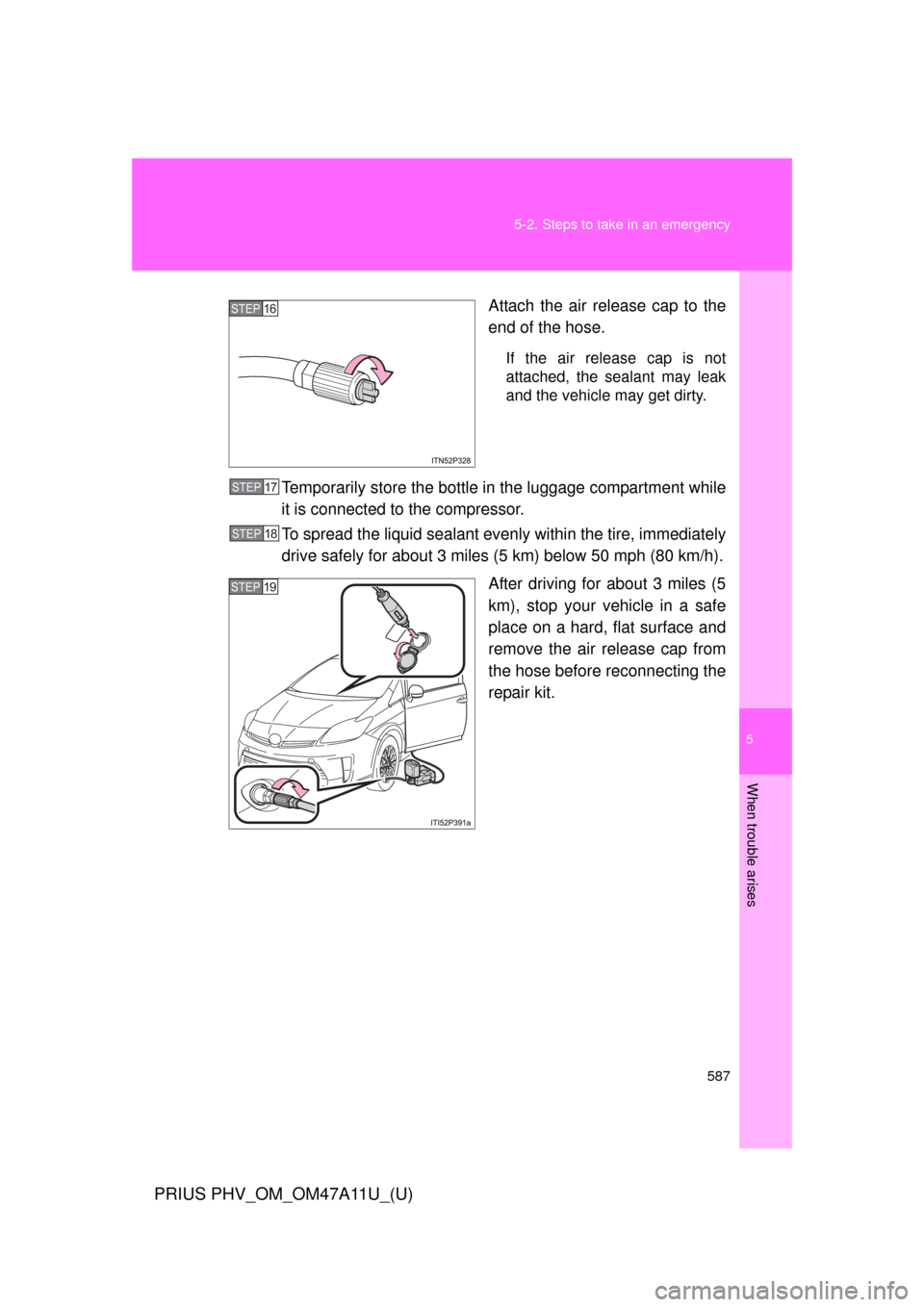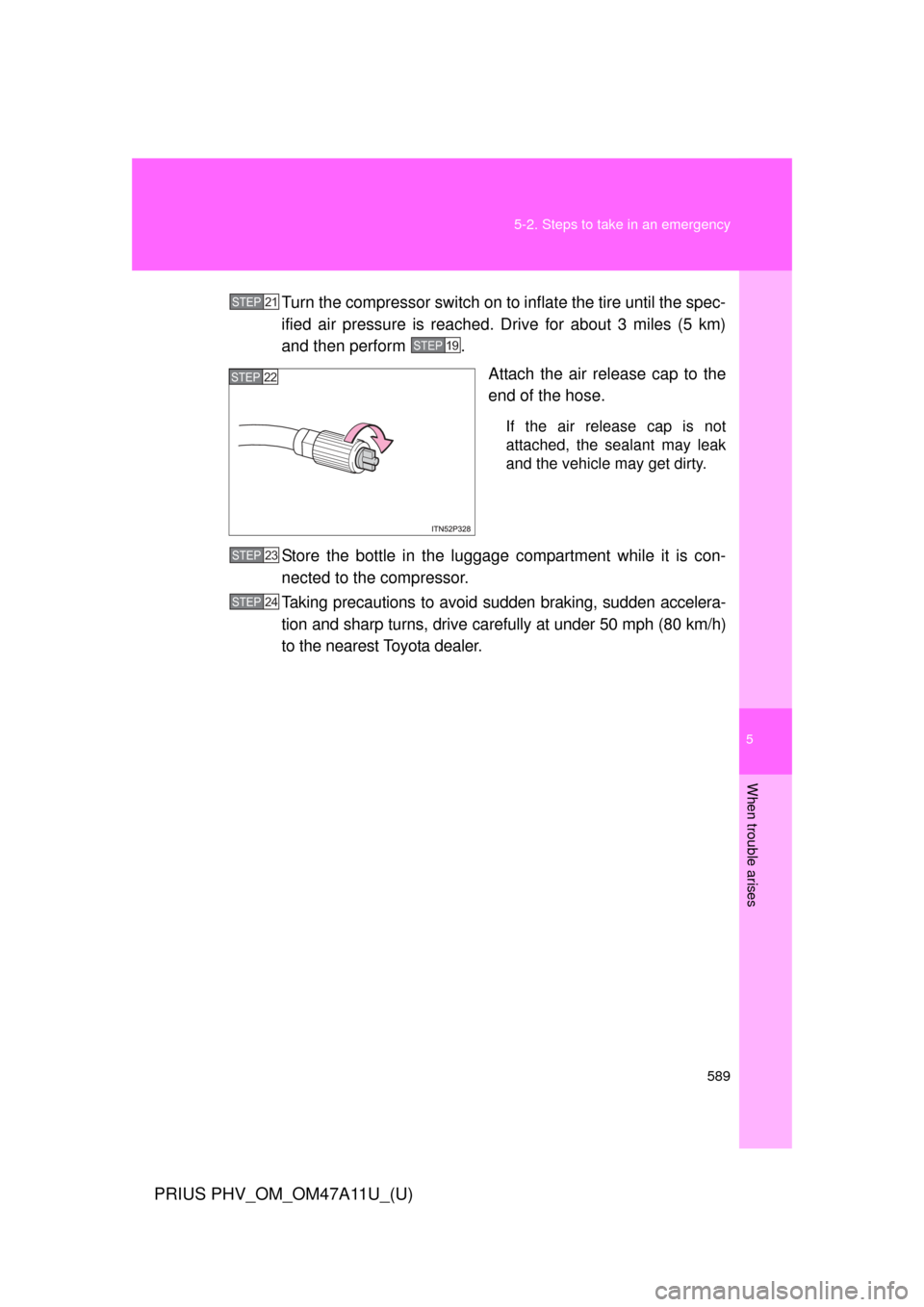TOYOTA PRIUS PLUG-IN HYBRID 2015 1.G Owners Manual
PRIUS PLUG-IN HYBRID 2015 1.G
TOYOTA
TOYOTA
https://www.carmanualsonline.info/img/14/6655/w960_6655-0.png
TOYOTA PRIUS PLUG-IN HYBRID 2015 1.G Owners Manual
Trending: oil change, clock setting, instrument cluster, bluetooth, oil temperature, emergency towing, wiper fluid
Page 581 of 692
5
When trouble arises
581
5-2. Steps to take in an emergency
PRIUS PHV_OM_OM47A11U_(U)
Connect the hose to the valve.
Screw the end of the hose
clockwise as far as possible.
Make sure that the compressor
switch is off.
Remove the rubber stopper from
the compressor.
STEP 4
STEP 5
STEP 6
Page 582 of 692
582 5-2. Steps to take in an emergency
PRIUS PHV_OM_OM47A11U_(U)
Connect the power plug to the power outlet socket. (P. 401)
Instrument panel
Rear console boxSTEP7
Page 583 of 692
5
When trouble arises
583
5-2. Steps to take in an emergency
PRIUS PHV_OM_OM47A11U_(U)
Connect the bottle to the com-
pressor.
Connect by inserting the bottle
straight into
the compressor,
and make sure that the protrud-
ing part of the bottle is properly
aligned with the groove in the
case.
Attach the 2 stickers as shown.
Remove any dirt and moisture
from the wheel before attaching
the sticker.
If you are unable to apply the
stickers, inform the nearest
Toyota dealer that sealant has
been applied to the puncture
when having the tire repaired or
replaced.
STEP8
STEP9
Page 584 of 692
584 5-2. Steps to take in an emergency
PRIUS PHV_OM_OM47A11U_(U)
Check the specified tire inflation pressure.
Tire inflation pressure is specified on the label on the driver’s side
pillar as shown. ( P. 627)
Start the hybrid system. ( P. 242)
To inject the sealant and inflate
the tire, turn the compressor
switch on.
STEP10
ITO52P163
STEP11
STEP12
Page 585 of 692
5
When trouble arises
585
5-2. Steps to take in an emergency
PRIUS PHV_OM_OM47A11U_(U)
Inflate the tire until the specified
air pressure is reached.
The sealant will be injected and
the pressure will spike to 44 psi
(300 kPa, 3.1 kgf/cm
2 or bar) or
58 psi (400 kPa, 4.1 kgf/cm2 or
bar), and then gradually
decrease.
The air pressure gauge will dis-
play the actual tire inflation
pressure about 1 minute (15
minutes at low temperature)
after the switch is turned on.
Inject to specified air pressure.
• Turn the compressor switch
off and then check the tire
inflation pressure. Being
careful not to over inflate,
check and repeat the inflation
procedure until the specified
tire inflation pressure is
reached.
STEP13
Page 586 of 692
586 5-2. Steps to take in an emergency
PRIUS PHV_OM_OM47A11U_(U)
• If the tire inflation pressure isstill lower than the specified
point after inflation for 10
minutes (40 minutes at low
temperature) with the switch
on, the tire is too damaged to
be repaired. Turn the com-
pressor switch off and con-
tact your Toyota dealer.
• If the tire inflation pressure exceeds the specified air
pressure, let out some air to
adjust the tire inflation pres-
sure. ( P. 590, 627)
With the compressor switch off, disconnect the hose from the
valve on the tire and then pull out the power plug from the
power outlet socket.
Some sealant may leak when the hose is removed.
Install the valve cap onto the valve of the emergency repaired
tire.
STEP14
STEP15
Page 587 of 692
5
When trouble arises
587
5-2. Steps to take in an emergency
PRIUS PHV_OM_OM47A11U_(U)
Attach the air release cap to the
end of the hose.
If the air release cap is not
attached, the sealant may leak
and the vehicle may get dirty.
Temporarily store the bottle in the luggage compartment while
it is connected to the compressor.
To spread the liquid sealant evenl
y within the tire, immediately
drive safely for about 3 miles (5 km) below 50 mph (80 km/h).
After driving for about 3 miles (5
km), stop your vehicle in a safe
place on a hard, flat surface and
remove the air release cap from
the hose before reconnecting the
repair kit.
STEP16
STEP17
STEP18
STEP19
Page 588 of 692
588 5-2. Steps to take in an emergency
PRIUS PHV_OM_OM47A11U_(U)
Turn the compressor switch on
and wait for several seconds,
and then turn it off. Check the tire
inflation pressure.If the tire inflation pressure is
under 19 psi (130 kPa, 1.3 kgf/
cm
2 or bar): The puncture
cannot be repaired. Contact
your Toyota dealer.
If the tire inflation pressure is
19 psi (130 kPa, 1.3 kgf/cm
2
or bar) or higher, but less than
the specified air pressure:
Proceed to .
If the tire inflation pressure is
the specified air pressure:
Proceed to .
STEP20
STEP21
STEP22
Page 589 of 692
5
When trouble arises
589
5-2. Steps to take in an emergency
PRIUS PHV_OM_OM47A11U_(U)
Turn the compressor switch on to inflate the tire until the spec-
ified air pressure is reached. Drive for about 3 miles (5 km)
and then perform .
Attach the air release cap to the
end of the hose.
If the air release cap is not
attached, the sealant may leak
and the vehicle may get dirty.
Store the bottle in the luggage compartment while it is con-
nected to the compressor.
Taking precautions to avoid sudden braking, sudden accelera-
tion and sharp turns, drive carefully at under 50 mph (80 km/h)
to the nearest Toyota dealer.
STEP21
STEP19
STEP22
STEP23
STEP24
Page 590 of 692
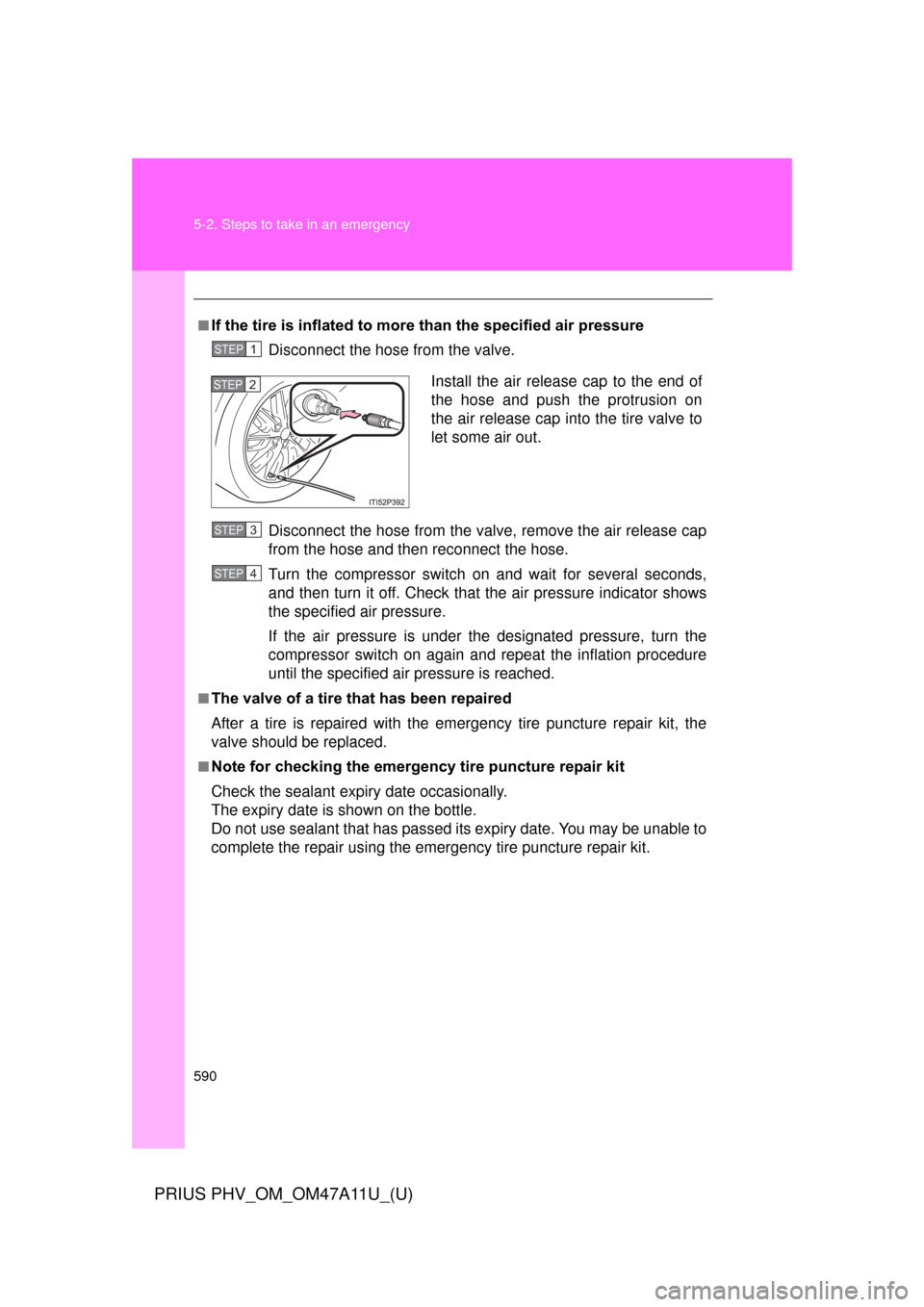
590 5-2. Steps to take in an emergency
PRIUS PHV_OM_OM47A11U_(U)
■If the tire is inflated to more than the specified air pressureDisconnect the hose from the valve.
Disconnect the hose from the valve, remove the air release cap
from the hose and then reconnect the hose.
Turn the compressor switch on and wait for several seconds,
and then turn it off. Check that the air pressure indicator shows
the specified air pressure.
If the air pressure is under the designated pressure, turn the
compressor switch on again and repeat the inflation procedure
until the specified air pressure is reached.
■The valve of a tire that has been repaired
After a tire is repaired with the emergency tire puncture repair kit, the
valve should be replaced.
■Note for checking the emergency tire puncture repair kit
Check the sealant expiry date occasionally.
The expiry date is shown on the bottle.
Do not use sealant that has passed it s expiry date. You may be unable to
complete the repair using the emergency tire puncture repair kit.
STEP 1
Install the air release cap to the end of
the hose and push the protrusion on
the air release cap into the tire valve to
let some air out.STEP 2
STEP 3
STEP 4
Trending: check transmission fluid, fuel cap release, oil filter, service indicator, oil change, bluetooth, climate control
